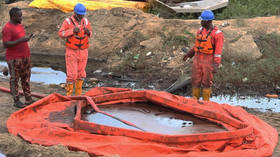Africa losing large portions of vital forest – study

Africa experienced a significant decline in tree cover last year, amounting to around 3.6 million hectares (14,000 square miles), recent data has shown.
According to the study by the University of Maryland, which is available on the World Resource Institute’s (WRI) Global Forest Watch platform, around 800,000 hectares (3,000 square miles) of this comprised primary or old-growth tropical forests.
The Democratic Republic of the Congo (DRC), where primary forest loss remains persistently high, accounted for the majority of the decline. The country is said to have lost over half a million hectares in 2022 as a result of agricultural expansion into primary forest areas in response to rising food demand.
While losses in countries such as Angola and Cameroon have accelerated, Ghana has experienced a dramatic increase in tropical primary forest declines in recent years, mostly within protected areas.
With a 71% score, the report says Ghana had the highest proportion of losses of any tropical country in 2022.
“In 2022, the country lost 18,000 ha, and while the area of primary forest loss is relatively small, Ghana has little primary forest remaining,” the study suggests.
Some of the losses are associated with cocoa production, timber harvesting, fire, and gold-mining activities.
Meanwhile, Gabon and the Republic of Congo continue to have low rates of overall primary forest loss.
Research has shown that protecting primary forests helps mitigate climate change by avoiding emissions from land use and land-use change, supporting a stable carbon reservoir, and acting as a major sink for carbon.
Representatives of 145 countries signed the Glasgow Leaders’ Declaration on Forests and Land Use at the UN climate summit (COP26) in 2021, committing to halt and reverse forest loss by the end of the decade.
A year after the declaration, “instead of consistent declines in primary forest loss to meet that goal, the trend is moving in the wrong direction,” the WRI said.













